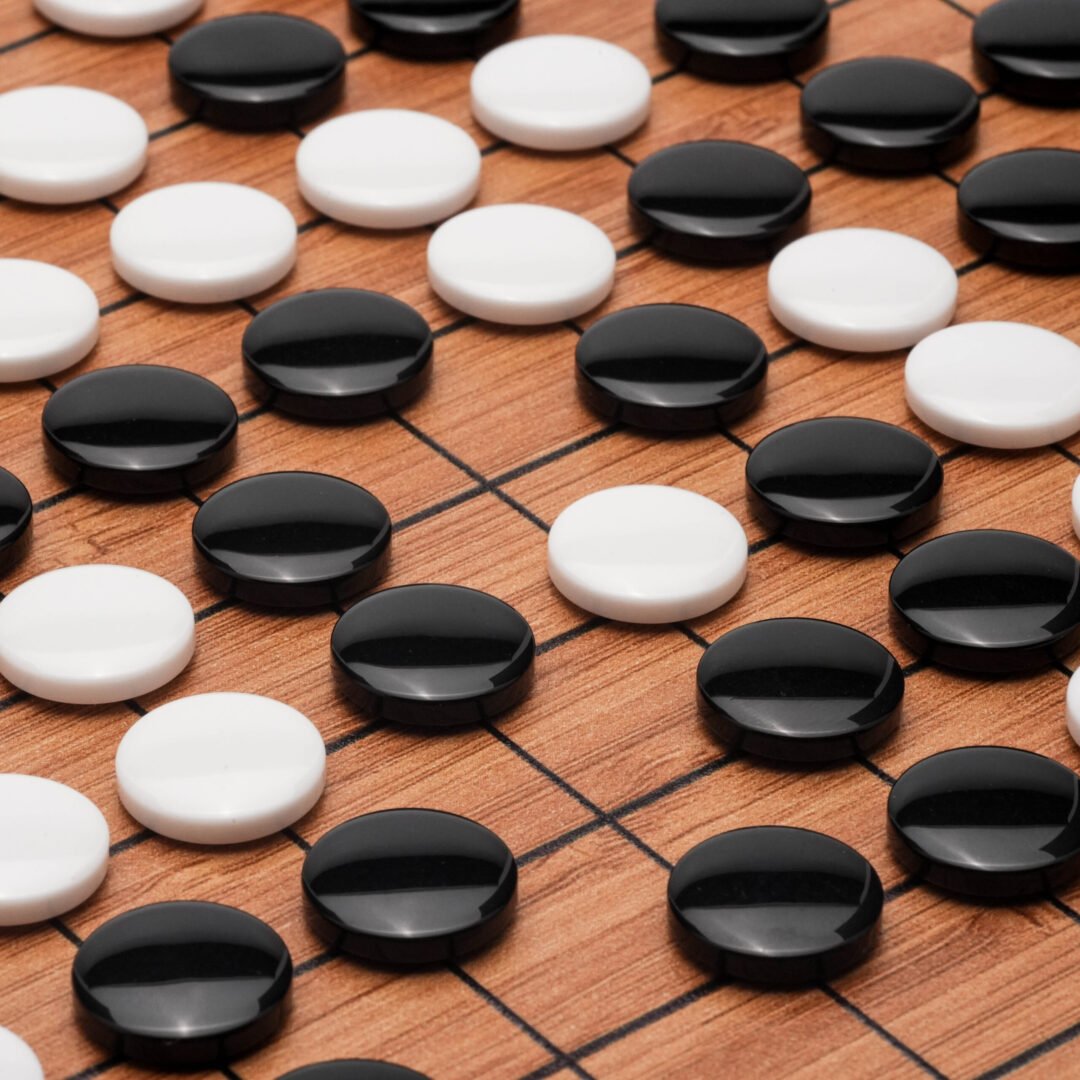SAFETY WARNING (1 of 2)
Adult supervision is required for children under 5 years old.
This game features small black and white pieces reminiscent of candy-coated chocolates. It is important to note that these components pose potential choking hazards for children under 5 years old. Consequently, it is recommended that the game be played under adult supervision. Additionally, to ensure the safety of young children, the game should be stored out of their reach in its box both before and after each playing session.
SAFETY WARNING (2 of 2)
Sharp Edges Pose Injury Risk
This game includes a board with sharp and pointed edges and corners. Children who access this board without its intended purpose may risk injuring themselves and others. Therefore, it is recommended to play the game under adult supervision and store it out of the reach of children, both in its box before and after use.
Just One Question to Begin: Is it worth investing time in learning to play Go?
While it is easy to learn the basic rules, mastering the game can take a lifetime. Above all, whatever your level is, it is extremely fun.
The rules of Go may be simple, but the depth of strategy and complexity this ancient game offers is truly remarkable. It’s a game that rewards patience, careful planning, and deep thinking. As you embark on your journey into the world of Go, remember that practice and persistence are key to becoming a skilled player. So, grab a board and say hello to the ‘Go’ World.
What are we talking about? Lifetime learning and is it still fun? If you’re not satisfied with a one-paragraph answer, let us tell you more about Go and why it is becoming popular every single day.
The Enduring Appeal of Go: A Game for All Ages
Go, also known as Baduk in Korea and Weiqi in China, is one of the world’s oldest and most revered board games. Originating in ancient China over 2500 years ago, this abstract strategy game has maintained its popularity through the ages and across cultures. What sets Go apart from other board games is its timeless appeal to players of all ages. In this article, we’ll explore the reasons why Go continues to be a fun and engaging game for people of every generation.
Simple Rules, Infinite Complexity
One of the key reasons Go appeals to all ages is its simplicity. Go is played on a 19×19 grid (or smaller boards for beginners) with two types of pieces, black and white stones. The rules are straightforward: players take turns placing their stones on the intersections, attempting to capture their opponent’s stones or surrounding territory. Despite its simplicity, Go offers infinite complexity, making it easy to learn but difficult to master. This aspect allows both children and adults to enjoy the game on various levels.
Deep Strategic Thinking
Go encourages players to think strategically and plan their moves ahead. This deep level of strategic thinking appeals to older players who enjoy the mental challenge. It also fosters critical thinking, patience, and problem-solving skills, making Go an excellent activity for cognitive development.
A Lifetime of Learning
No matter how skilled you become at Go, there is always room for improvement. This continuous learning curve keeps players engaged throughout their lives. The game’s strategic depth means that even seasoned players can find new ways to enhance their skills and understanding of the game. This aspect of Go makes it equally appealing to both beginners and experienced players.
Minimal Equipment, Maximum Engagement
Go requires nothing more than a board and stones, making it accessible to people of all ages and backgrounds. You don’t need expensive equipment or a large group of players to enjoy a game. This simplicity and accessibility contribute to Go’s universal appeal.
A Sense of Community
While Go can be played in solitude, it is often enjoyed in a social setting. Go clubs and communities exist worldwide, providing a sense of camaraderie and a way to connect with people of all ages. This social aspect enhances the game’s enjoyment and brings people together across generations.
Cultural Significance
Go holds a special place in the cultural heritage of many countries, particularly in East Asia. It’s a game that transcends borders and has been cherished by generations. Learning Go can be a gateway to exploring the rich history and traditions of the countries where it is deeply rooted.
Stress Relief and Relaxation
The contemplative nature of Go can be a source of relaxation and stress relief for players of all ages. The game’s slow pace and meditative qualities offer a break from the hustle and bustle of daily life, making it an excellent way to unwind.
Discover the timeless beauty of Go
Go is a timeless game that bridges generational gaps and provides a unique source of enjoyment for people of all ages. Its simple rules, strategic depth, lifelong learning potential, and social aspects make it a game that can be appreciated by young and old alike. Whether you’re a child just discovering the joy of playing Go or a seasoned player looking for a mental challenge, Go offers something for everyone, making it a truly universal and enduring game. So, why not gather your friends and family, young and old, and embark on a journey to discover the timeless beauty of Go?
The Go Board
Go is played on a square grid board, typically with 19×19 intersections, although smaller boards such as 13×13 or 9×9 are also common for beginners. The intersections are where players place their stones.
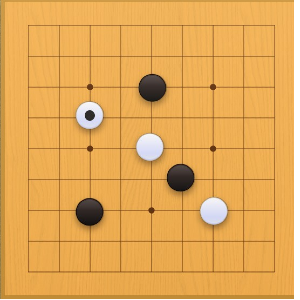
A 9×9 Go board is suitable for beginners and learners of all ages.

A 13×13 Go board is suitable for both beginners and advanced players looking for quick games.
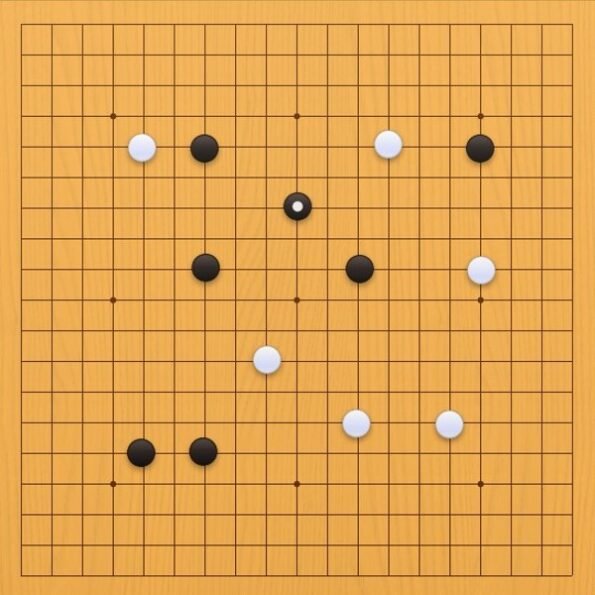
A 19×19 Go board is for advanced and professional players. Also used Go tournaments.
The Stones
Go is played with black and white pieces which are called “stones”. The player who took black stones starts the game by placing a single stone on the board and the player with the white stones takes the turn. The players take turns placing stones on the intersections of the grid.
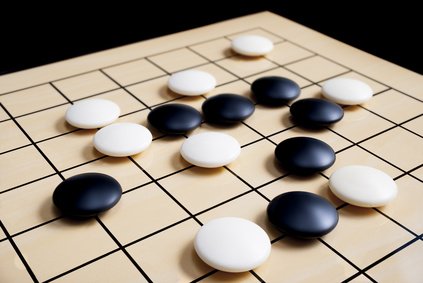
Objective
The objective of Go is to control as much of the board as possible by surrounding empty intersections with your stones. Players aim to create territories while preventing their opponents from doing the same. The player with the larger area of controlled territory at the end of the game is likely to win. However, the number of captured stones also matters in the calculation of the score. The number of prisoners taken is subtracted from the surrounding territory, determining the player’s scores. Therefore, the goal of the Go game is to achieve higher scores than the opponent by controlling more territory and capturing fewer stones. We’ll provide a score example later. For now, please always remember that winning is all about surrounding the most territory.
Gameplay
The flow of a Go game is relatively straightforward
- Opening: Players strategically place stones to establish initial positions and influence on the board, focusing on corners, sides, and the center.
- Middle Game: Players continue building influence, capturing stones, and solidifying positions. Complex fights and battles often take place during this phase.
- End Game: As the game progresses, players concentrate on making efficient moves to maximize their territory and minimize their opponent’s, especially as most of the board becomes settled.
- Scoring: The game concludes when both players pass consecutively. Players then count their territories and captured stones to determine the winner.
Tips for Beginners
- Start Small: Beginners should start with smaller boards (9×9 or 13×13) to learn the basics and develop strategic thinking.
- Practice Tsumego: Tsumego are Go puzzles that help improve reading and tactical skills. Regular practice can be immensely beneficial.
- Study Professional Games: Watching and studying games played by professional Go players can provide valuable insights into strategy and tactics.
- Learn Opening Patterns: Familiarize yourself with common opening patterns to establish a strong foundation for the rest of the game.
- Play Frequently: The more you play, the better you’ll become. Online Go platforms offer opportunities to play against opponents of varying skill levels.
Basic Rules
- Stone Placement: The board is empty at the beginning of the game. Stones are placed on the intersections of the grid. Please see all the pictures to see how the stones are placed at the intersection points. The stones never move on the board. They are only removed from the board when they are captured.
- Capturing: Stones are captured when they are completely surrounded, vertically and horizontally, by the opponent’s stones. Captured stones are removed from the board. The Black stone at B3 is almost surrounded by white stones. In the next move black plays to somewhere that is not in the picture and white captures the black stone by placing a stone at A3. Black has been removed from the board as a prisoner.


The pointed stone with a dot in the middle indicates the last move. This is a common practice in Go to mark the most recent move on the board, making it easier for players and spectators to follow the progression of the game.
IT IS ALWAYS USEFUL TO TELL THE TERM “LIBERTY” WHILE TELLING THE CAPTURE. BECAUSE WHEN THERE IS NO LIBERTY LEFT THAT MEANS YOU ARE CAPTURED. A SINGLE STONE OR A GROUP.
1 ADET TAŞIN CAPTURE EDİLMESİNİ GÖSTERDİK. GRUP DA CAPTURE EDİLEBLİR. BİRBİRİNE YATAY VE DİKEY OLARAK BAĞLI TAŞLAR GRUPLARI OLUŞTURUR. YİNE AYNI TEK BİR TAŞ DA OLDUĞU GİBİ GRUPLARIN DA CAPTURE EDİLMESİ İÇİN YAYAT VE DİKEY OLARAK ÇEVRELENMİŞ OLMALARI GEREKİR
- Ko Rule: To prevent infinite repetitions, there is a rule called the “Ko Rule.” If capturing a stone creates the exact same board position that existed one move earlier, the opponent cannot recapture it immediately. This prevents endless back-and-forth captures.

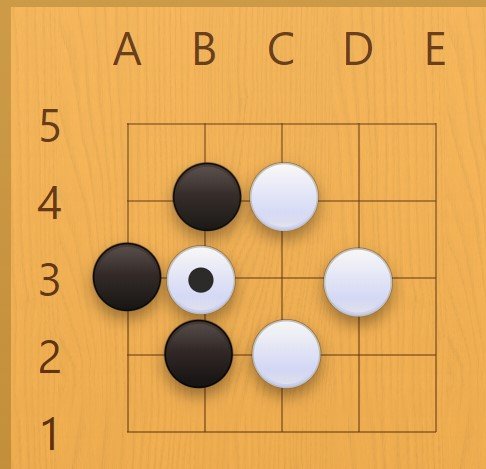
On the left picture black played at A3. White is allowed to place a stone at B3 because as soon as it places the stone it captures the black stone at C3. When the board becomes as in the right picture placing a black stone at C3 is not allowed to prevent the repeating moves forever. This rule is “ko” and it is built to prevent infinite moves in such positions.
- Passing: If a player has no viable moves left, they may pass their turn. Once both players pass consecutively, the game ends.
- Scoring: After the game ends, players determine their territory and count captured stones. The player with the most points wins. (BURAYA BASİT BİR SKOR ÖRNEĞİ)
WE WONT TELL YOU MORE BECAUSE …
- THERE ARE NO MORE RULES HOW EVER NOT TO BE CONFUSED WITH RULES THERE ARE SOME INFERENCES THAT MIGHT LOOK LIKE RULES BECAUSE OF THE STRUCTURE OF THE GO GAME -The wide variety of positions that can occur –
- UNTIL HERE WE TALKED ABOUT THE BASICS OF GO GAME. THE BEST WAY OF LEARNİNG IS TO DIVE INTO DIGITAL SOURCES WHERE YOU CAN PLAY GAMES WITH PEOPLE OR SOLVING PROBLEMS BLA BLA BLA. HERE WE GATHERED HERE OUR FAVORITES::

